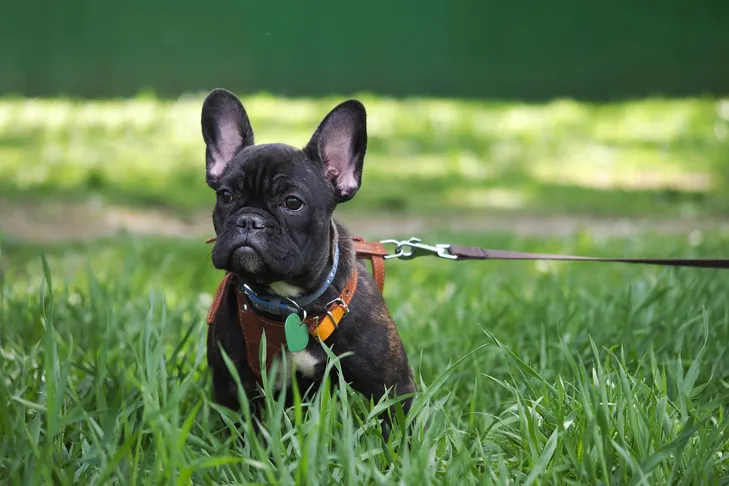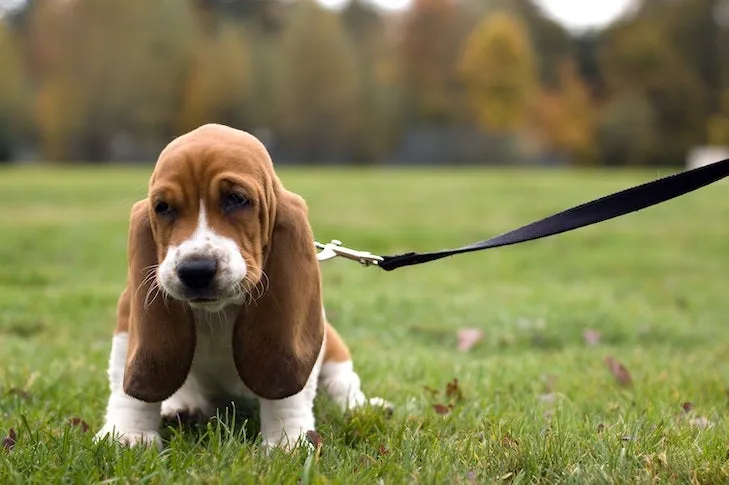Embarking on the journey of puppy parenthood is filled with joy, and a crucial part of this adventure is teaching your new companion essential skills. Among the most vital is Training Your Puppy To Walk On A Lead. While it might seem intuitive, polite leash walking is a learned behavior that requires patience, consistency, and a positive approach. This guide will equip you with the knowledge and techniques to transform your puppy’s walks from a tug-of-war into a harmonious experience, ensuring both your comfort and your dog’s safety and enjoyment.
Teaching your puppy to walk nicely on a lead is not just about preventing pulling; it’s about building a foundation of communication and trust between you and your canine friend. This skill is paramount for safe outings, vet visits, and simply enjoying the world together. Expert advice from seasoned trainers underscores the importance of early and consistent training to establish good habits from the outset.
The foundation of successful leash training begins before you even step outside. It’s about making the equipment a positive association for your puppy.
Introducing the Collar or Harness and Leash
The first step is to introduce your puppy to the tools of the trade: the collar or harness, and the leash. Allow your puppy to wear these items for short durations within the comfort of your home. Make these experiences overwhelmingly positive by pairing the gear with engaging play sessions and delicious treats. The goal is for your puppy to associate the collar, harness, and leash with fun and rewards, rather than seeing them as restrictive or uncomfortable. This early positive association is key to building their comfort and willingness to cooperate.
 A playful French bulldog puppy wearing a blue harness sits attentively in lush green grass, its leash extended, ready for an outdoor adventure.
A playful French bulldog puppy wearing a blue harness sits attentively in lush green grass, its leash extended, ready for an outdoor adventure.
Establishing a Positive Cue
Next, it’s time to introduce a verbal or auditory cue that signals something positive is about to happen. This could be a clicker sound (if you’re using clicker training), a cheerful “yes,” or even a distinct tongue click. The key is consistency. In a calm environment free from distractions, equip your puppy with their collar and leash. Deliver your chosen cue. The instant your puppy acknowledges the cue by turning towards you or making eye contact, immediately reward them with a high-value treat. After several repetitions, your puppy will begin to anticipate the treat and eagerly look to you for guidance. This process helps them understand that paying attention to you is rewarding.
Encouraging Them to Come to You
Once your puppy reliably responds to the cue, you can start building on this connection. While they are on their way to you after hearing the cue, take a few steps backward. As they reach you, lavish them with praise and a treat. Gradually increase the distance you back up, encouraging your puppy to walk with you for a few steps before receiving their reward. Remember that puppies have short attention spans, so keep training sessions brief and engaging. Always aim to end on a positive note, leaving your puppy wanting more, rather than feeling overwhelmed or tired. This reinforces the idea that walking with you is enjoyable.
Practicing Indoors
Before venturing into the bustling outdoors, it’s essential to solidify the basic leash-walking skills in a controlled indoor environment. With minimal distractions, practice walking a few steps with your puppy on the lead. The sensation of the leash and collar should be familiar by now. Continue to use your positive cue and reward them generously with treats and praise as they walk alongside you. This controlled practice helps them focus on the mechanics of walking on a lead without the overwhelming sensory input of the outside world.
Transitioning to the Outdoors
The moment of truth arrives when you take your puppy’s training outside. The outdoors presents a world of new sights, sounds, and smells that can be incredibly distracting for a young dog. Approach this stage with patience and keep initial outdoor sessions short and positive. Throughout your walk, remain vigilant. If you notice your puppy becoming fixated on something or showing signs of distraction, use your cue and take a few steps in a different direction. Reward them with a treat for following your lead. By consistently redirecting their attention back to you, you teach them that staying engaged with you is more rewarding than chasing distractions.
 A Basset Hound puppy with long floppy ears sits patiently on a vibrant green leash in the grass, its expression calm and focused.
A Basset Hound puppy with long floppy ears sits patiently on a vibrant green leash in the grass, its expression calm and focused.
Navigating Common Leash-Training Challenges
Even with a solid start, you may encounter some hurdles as your puppy grows and encounters new environments and stimuli. Addressing these issues promptly and consistently will lead to more pleasant walks for everyone.
When Your Puppy Pulls
If your puppy consistently pulls ahead, it’s time to become “a tree.” Stop walking and stand still, refusing to move forward until your puppy loosens the tension on the leash and returns to your side. Avoid yanking or jerking the leash, as this can be counterproductive. For dogs that tend to pull strongly, consider using specialized equipment like front-hook harnesses or head halters, which can help manage pulling behavior.
Addressing Lunging Behavior
Lunging towards perceived “threats” like other dogs, passing cars, or cyclists can be alarming. To prevent this, be proactive. Try to redirect your puppy’s attention with a tasty treat before they have a chance to lunge. Increasing the distance between your puppy and the object of their interest can also be beneficial. Staying alert and anticipating potential triggers is crucial. While certain breeds may be more prone to herding behaviors, any dog can react strongly to unfamiliar or exciting stimuli.
Managing Barking on Walks
Barking at other dogs during walks is a common issue, often stemming from insufficient exercise or anxiety. Ensure your puppy receives adequate physical and mental stimulation tailored to their age and breed. If barking persists, employ a similar strategy to lunging: create distance and reward your puppy with treats for shifting their focus back to you when another dog appears. This consistent redirection teaches them to associate the sight of other dogs with turning their attention to you, rather than barking.
With consistent practice and positive reinforcement, you’ll gradually see a reduction in the need for troubleshooting. However, always keep a few high-value treats handy to randomly reward excellent leash-walking behavior, reinforcing the good habits you’ve established.
If you find yourself needing more personalized guidance, remember that resources like the AKC GoodDog! Helpline offer direct access to professional trainers who can provide invaluable advice for house-training and behavioral issues.
